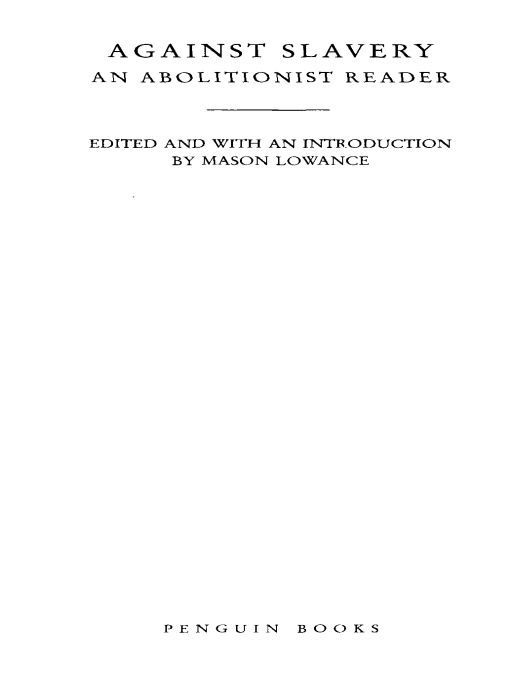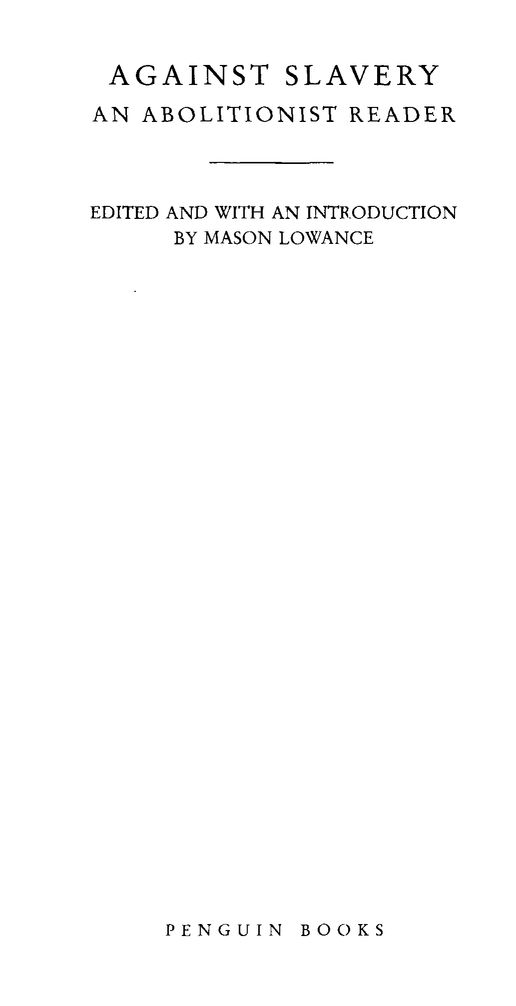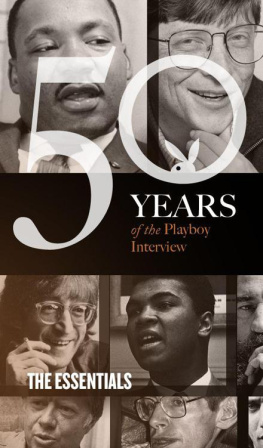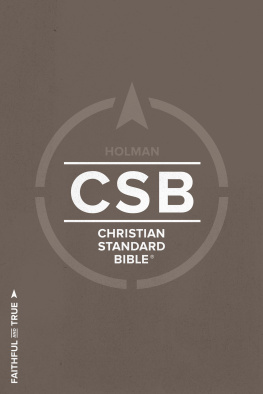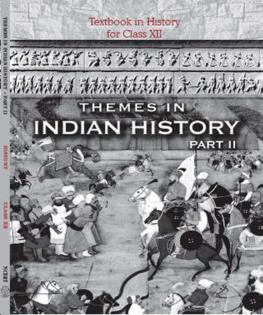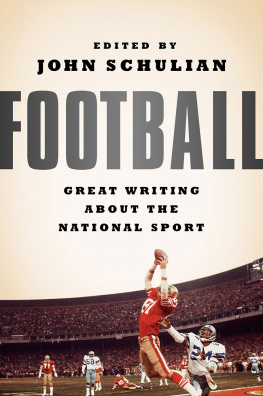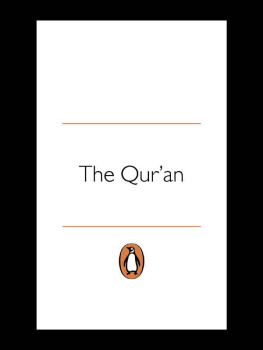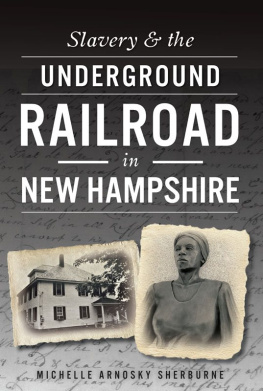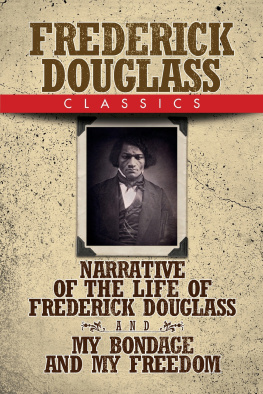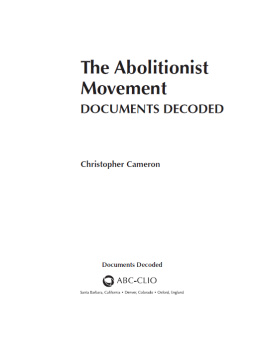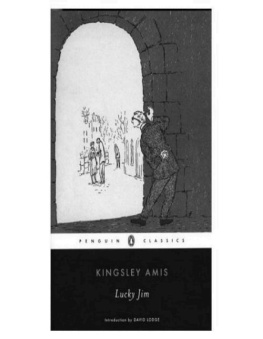Table of Contents
AGAINST SLAVERY
Mason Lowance is professor of English at the University of Massachusetts, Amherst. His books include Increase Mather (1974), Massachusetts Broadsides of the American Revolution (1976), The Language of Canaan (1980), The Typological Writings of Jonathan Edwards (1993), and The Stowe Debate: Rhetorical Strategies in Uncle Toms Cabin (1994). He has held a Guggenheim Fellowship and a National Endowment for the Humanities Fellowship, and has been a fellow of the National Humanities Institute at Yale University and a life member of the American Antiquarian Society.
Dean Grodzins and William Pannapacker are lecturers in history and literature at Harvard University specializing in nineteenth-century American literature.
Dedicated to
PROFESSOR EMERITUS ARTHUR BANKS, JR.,
MOREHOUSE COLLEGE
and to the memory of
MRS. LOUISE JACKSON
GENERAL INTRODUCTION
Freedom is and has always been Americas root concern, a concern that found dramatic expression in the abolitionist movement. The most important and revolutionary reform in our countrys past, it forced the American people to come to grips with an anomaly that would not downthe existence of slavery in the land of the free.
BENJAMIN QUARLES, THE BLACK ABOLITIONISTS, 1969
Thus begins one of this centurys best studies of the abolitionist movement of the nineteenth century, written by an African American scholar who, with John Hope Franklin, explored the role of slavery in American society and the contributions of abolitionists to emancipation, before either topic reached the mainstream of American historical studies. Franklin and Quarles were writing in the 1940s and 1950s, when African American scholars were denied access to some college and university libraries in the United States, but their pioneering studies, both researched at the Library of Congress when other resources were closed to them, are monumental works of scholarship on antebellum America, and Franklins From Slavery to Freedom: A History of Negro Americans, first published in the 1940s, is still in print.
The purpose of this anthology of abolitionist writings is to make available to the scholar and student primary documents representing the antislavery and abolitionist movements of the eighteenth and nineteenth centuries. Each selection is introduced and annotated, and the section introductions provide an examination of the historical and cultural contexts out of which the texts were developed. Following this general introduction, the anthology includes background documents showing the rise of antislavery sentiment in America when it was still a colony of Great Britain, excerpting the writings of Samuel Sewall, Cotton Mather, John Woolman, Phillis Wheatley, Thomas Jefferson, and Frederick Douglass, whose What to the Slave Is the Fourth of July? (1852), a piece written well after the colonial period, is a hostile response to a nation which celebrates annually the fundamental Enlightenment principle of natural rights by reaffirming that all men are created equal while tolerating the right of slaveholders to own human beings.
Americans began debating the slavery issue in the late seventeenth century, when the Quakers, who had opposed slavery in Great Britain, developed arguments against the expansion of chattel slavery in North America, but their voices were muted compared to the overwhelming economic development of the plantation system in the Southern colonies. Early opponents of slavery were primarily religious figures, like the founder of Methodism, John Wesley, who wrote a treatise attacking the institution in the mid-eighteenth century. The Quaker meetings collectively opposed slavery, and one among them, John Woolman, eloquently told of the anguish of conscience he suffered when required by his employer, a New Jersey lawyer, to write an indenture of sale for the purchase of a slave. Moreover, slavery was challenged by natural rights theorists of the Enlightenment, and it is one of the ironies of American history that the most eloquent articulation of those principles composed by an American, the Declaration of Independence, should have been authored by Thomas Jefferson, master of a Virginia plantation and the owner of slaves.
Because the charter document of the United States, the Constitution, failed to adequately treat or even to confront the question of slavery, the legacy of the early importation of Africans to North America to serve as laborers on Southern plantations and as domestic servants and laborers in some Northern colonies was transmitted to the nineteenth century, just as the new nation conceived in liberty and dedicated to the proposition that all men are created equal, as Abraham Lincoln would eloquently rephrase it in his Gettysburg Address, was attempting to define its objectives and establish its identity. Remarkably, the flexibility of the Constitution as an ever-changing charter document, whose amendment system permitted alteration of the original plan, gave opponents of slavery the opportunity not only to argue the moral degradation of humanity brought about by the peculiar institution, but to set forth an objective of immediate and unconditional emancipation of the slaves through an amendment to the Constitution itself.
These changes did not come easily. As Section II shows, the Bible was used by proslavery and antislavery advocates alike either to argue for the retention and extension of slavery, or to demand its termination. Theodore Dwight Weld, James Freeman Clarke, Alexander McLeod, and Robert Dale Owen were but four of many who were opposed to slavery and used their Bibles to frame theological arguments designed to persuade readers, and listeners, that slavery was morally wrong and that owning slaves was fundamentally a sin in the biblical sense of the term. These theological arguments gained some momentum in the early nineteenth century, but they were delivered by less powerful voices that those of the leading opponents of slavery who wrote and debated between 1830 and 1865, the period of the militant and aggressive abolitionist crusade. Section III is the main section of this anthology, and it includes the writings of some of the leading abolitionists of these crucial decades, including William Lloyd Garrison, Wendell Phillips, Lydia Maria Child, David Walker, and Harriet Beecher Stowe.
Thus it is critical to distinguish between the broad phrase anti-slavery movement and the specific intellectual and political crusade of the abolitionists between 1830 and 1865, when the institution of slavery was officially ended in the United States through the Thirteenth Amendment to the Constitution. Antislavery is a sweeping phrase that refers to those individuals and groups who opposed the enslavement of human beings as chattel property, especially during the period 1776-1865, while the United States government officially sanctioned slavery despite the protestations of its charter documents. The Constitution of 1787 did not openly discuss slavery as an issue, but allowed it as a practice by disregarding the application of constitutional principles to chattel slaves of African American descent. The status of the mother usually determined the status of the child, so that the natural reproduction of slaves in the United States greatly expanded the enslaved population even after Congress outlawed the

